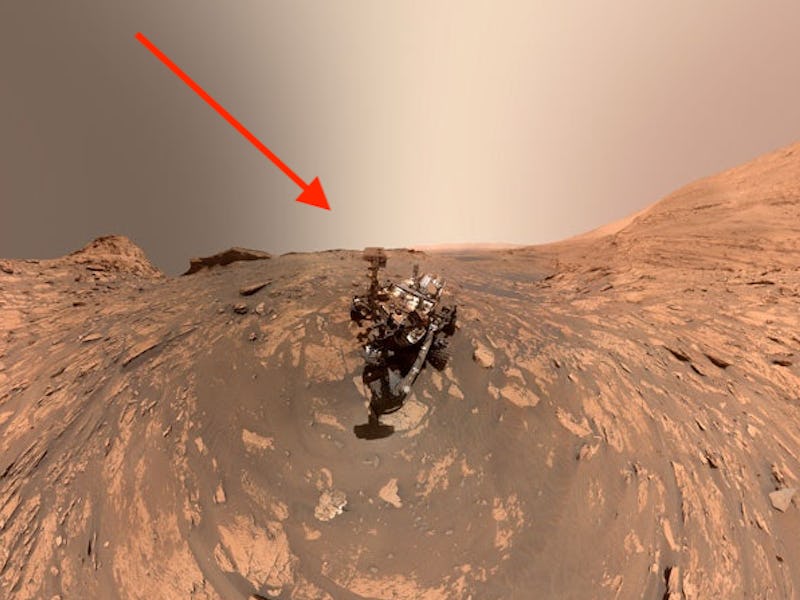Before and after: Curiosity rover panorama reveals the enormity of Mars
What a difference an angle makes.

NASA’s Curiosity rover loves taking a Mars selfie — a grand tradition of robotic naval-gazing passed on to the Mars 2020 rover, Perseverance. Yet somehow, Curiosity manages what Instagram influencers can only dream: Every selfie seems better than the last, and the latest one from the near-decade-old rover takes it up a notch — by going wide, and then some.
The panorama-style, before-and-after selfie, released by NASA this week, shows the rover in the middle of an arena-like space, flanked by a rock formation called Greenheugh Pediment to the left and a hill called Rafael Navarro Mountain at the back.
A total of 81 images were taken on November 20 and stitched together by the Curiosity team to create the majestic wide-angle shot.
Here’s the “before” image: It shows a subdued, but majestic, view of the rover, with the Sun in the sky and a view of the surrounding terrain:
The limited view of the rover at Gale Crater.
But not content with such a simple view, the Curiosity team zoomed out a little bit.
The “after” image acts as a reminder for everyone that even if the rover is the size of an SUV, it’s still a mere mote in the scheme of the planet:
Zoomed out.
Zoomed out, the scenery appears much more varied — and it also becomes more obvious the kind of difficult world Curiosity has to navigate. The sharp, broken terrain of rock and iron-infused dust give the planet its famous hue, but it also reveals more of the area in and around Gale Crater, an ancient lake bed where water once likely flowed.
Since 2012, the Curiosity rover has accumulated evidence of the crater’s past conditions, coloring in the aquatic history of Mars and offering tantalizing hints that it may have once been habitable.
Curiosity rover: A long-lived explorer
The selfies aren’t just a good PR opportunity for the popular rover. It’s a chance for NASA to see what the environment of Mars has put the rover through. A January 2020 photo compared a snapshot from just after the rover landed to the then-present day, with the weathered rover covered in dust and a little worn down from the elements. (There are, after all, no car washes on Mars.)
While initially sent to Mars for a two-year mission, the rover is still going, reaching nine years on the Red Planet in August with no signs of stopping, partly thanks to a nuclear power source that ensures it doesn’t suffer the kinds of dust storms that felled solar-powered rovers like Opportunity.
This also gives NASA a chance to compare and contrast Curiosity results with those from Perseverance, a rover that landed on Mars in February. Perseverance, which operates like a souped-up version of Curiosity, is exploring Jezero Crater some 2,300 miles away. Both environments were likely once aquatic, which means that if Mars ever had life, it would have been present in these environments.
Unlike Curiosity, Perseverance has a set of instruments that can gather samples for later retrieval. Those samples could yield the smoking gun of past or present life on Mars.
But until we’re able to do that analysis we beg of NASA: send more selfies.